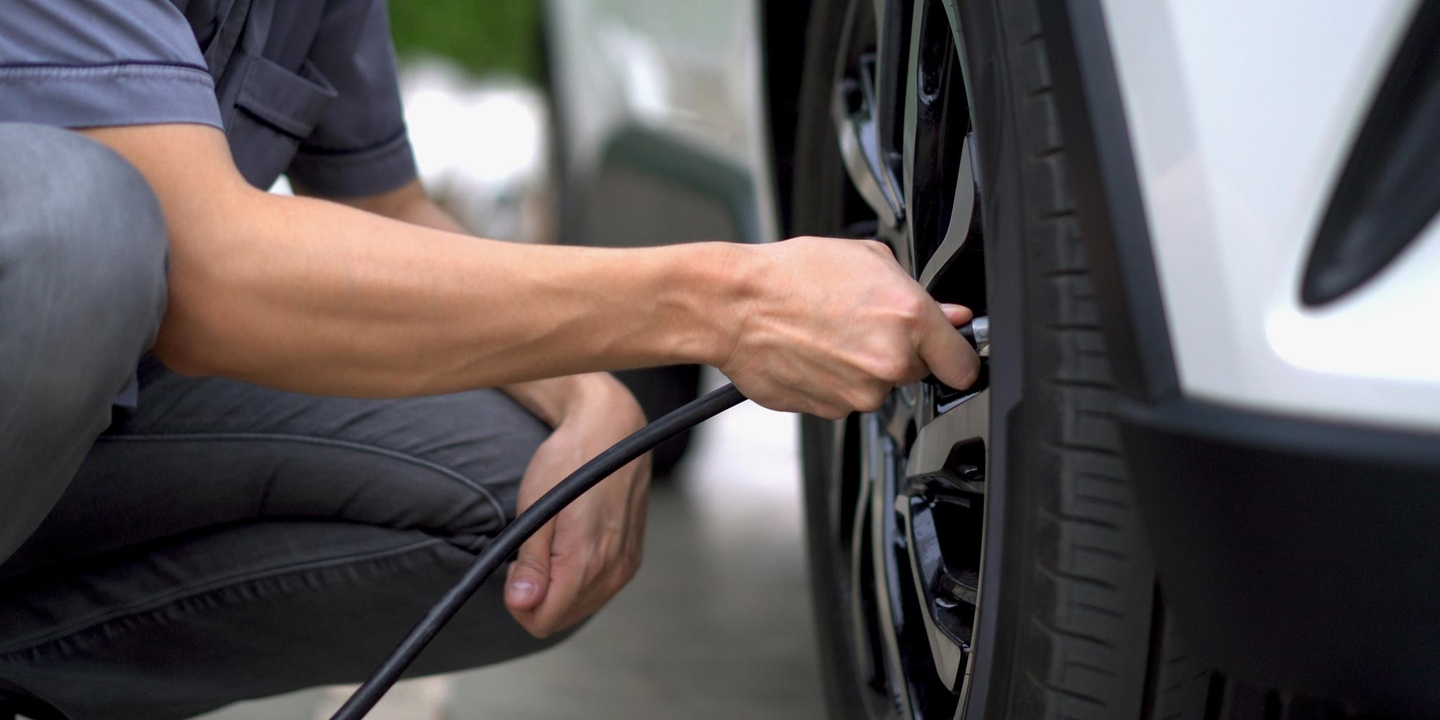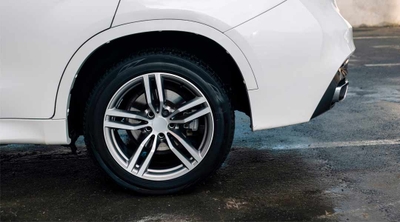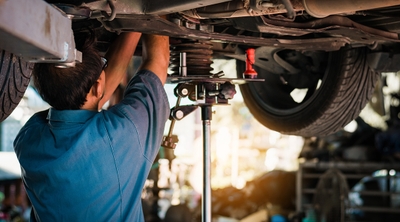What is the recommended tire pressure?
2 min read
Keeping your car’s tires at the proper tire pressure keeps you safe, provides better fuel efficiency, and helps tires wear more evenly. Most modern cars have tire pressure monitoring systems (TPMS) that alert you with a dashboard warning light if your tires are not at the recommended tire pressure level. You can manually check for normal tire pressure using a tire pressure gauge.
What should my tire pressure be?
There is no strict tire pressure guide as tire pressure is not universal, nor is it determined by tire size. According to Jonathan Ganther, COO and Founder of Brakes To Go, “Tire pressure will vary by your car’s make and model, and tire. On the driver’s side, there’s a sticker on the inside [of the door] with a picture of a tire with pressure information.” You can also find the proper tire pressure listed in the owner’s manual of your vehicle. There’s also a difference between recommended tire pressure and maximum tire pressure.
“The recommended tire pressure means you are safe to drive down the road and have a comfortable ride,” says Ganther. “The maximum pressure is the max amount the tire can hold without being unsafe.” Maximum pressure plays a larger role in SUVs and trucks that haul heavy loads. Your tire’s PSI will naturally decrease over time, but too much can point to a problem.
According to Ganther, “Losing about 1 to 2 PSI each month is considered normal.” Any more loss than that, and you might have a leak somewhere in the tire.
How to check your tire pressure
There are multiple types of tire pressure gauges available. They only cost a few dollars and can be found at gas stations, auto parts stores, grocery stores, or other retailers. Learn how to read tire sizes and numbers to find your recommended tire pressure.
How can I avoid a flat tire?
Having the recommended tire pressure for your car may help you avoid a flat tire. But flat tires can also be caused by punctures from nails or ruptures from roadway damage, such as hitting a large rock. A drop in pressure from cold weather and worn tire treads can also cause flat tires. Learn how to fix a flat tire and what to do if you are driving with a nail in your tire.
.
Patrick McCann of WeTryTires.com says, “Colder weather can cause the air inside the tire to contract and the pressure inside to drop.” He recommends topping off your air pressure at a gas station or from another source when this happens. Keep a close watch on your tire pressure as the seasons change. Knowing your normal tire pressure can give you a point of comparison. Learn how to check your tire’s tread depth.




